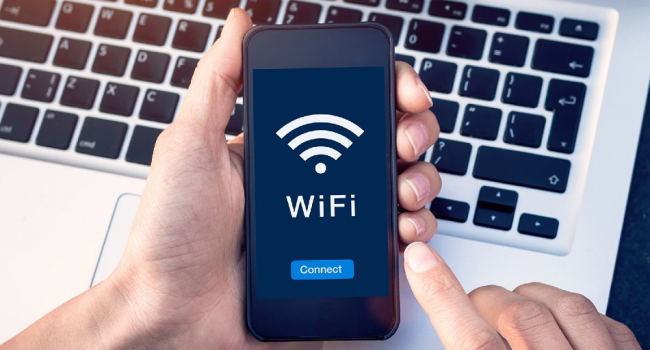
How do hackers use public Wi-Fi hotspots to intercept data and how to protect yourself from them?
April 30, 2024 14:07
The use of unsecured public Wi-Fi points at airports, train stations and other public places poses a number of threats, as hackers often use these points to intercept personal information and passwords.
To do this they can use various methods such as:
- Man-in-the-Middle (MitM) Attacks: In this type of attack, the hacker positions themselves between the user and the Wi-Fi network, intercepting data as it passes between them. The hacker can then eavesdrop on the communication or even alter the data being transmitted.
- Packet Sniffing: Hackers can use packet sniffing tools to capture data packets transmitted over the Wi-Fi network. These tools allow them to analyze the data for sensitive information such as usernames, passwords, or financial details.
- Evil Twin Attacks: In an evil twin attack, the hacker sets up a rogue Wi-Fi hotspot with a name similar to a legitimate hotspot. Unsuspecting users may connect to the rogue hotspot, allowing the hacker to intercept their data.
- Session Hijacking: Hackers can hijack active sessions between users and websites by stealing session cookies or other authentication tokens. This allows them to impersonate the user and gain unauthorized access to their accounts.
To protect against these threats, it is recommended that you avoid connecting to public Wi-Fi networks when performing sensitive activities such as online banking or accessing personal accounts.
If using public Wi-Fi is necessary, it is recommended that you use a virtual private network (VPN) to encrypt your internet traffic and keep your data safe.
Additionally, keeping devices and software up to date can also help reduce the risk of data leakage.
- Related News
- Why it is recommended to download applications on trusted platforms: In 2023, Google rejected publication of more than 2 million dangerous applications on Google Play
- What risks are hidden in keyboards of Android smartphones?
- Hackers attack more than 19 million Russians with Android smartphones
- iPhone users are advised to disable iMessage: What risks are hidden in it?
- Why it might not be a good idea to close background apps on Android?
- What signs can indicate presence of malicious applications in your smartphone?
- Most read
month
week
day
- 15 most beautiful bridges in the world (photos) 947
- Huawei Pura 70 Ultra: The new smartphone has the world's best camera? 869
- A really original game: In Bruce and Box you control a naked man with a box - and you will also need a box to play it 710
- iPhone will warn about nearby tracking devices: Apple releases iOS 17.5, which has several new features 661
- OpenAI presents free AI model GPT-4o: It is smarter and knows Armenian 612
- 5 most dangerous smartphones in terms of SAR radiation levels 590
- What unpleasant feature of 2024 iPad Air’s cheap version did Apple keep silent about? 538
- Apple will make revolutionary changes to Siri 528
- Unitree unveils its new humanoid robot that cracks nuts, makes toast, does acrobatics and costs $16,000 517
- Microsoft will end support for Windows 10 version 21H2 500
- Archive
